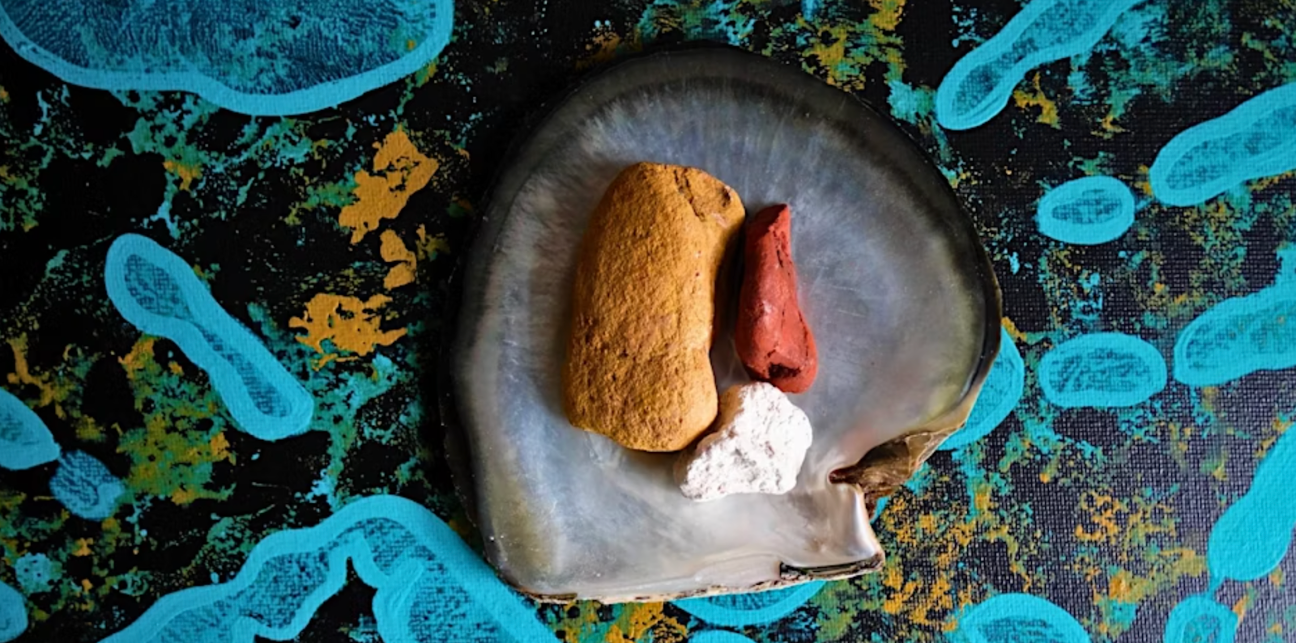Caring for Your Bark Painting: Tips from Aboriginal Art Co

Owning an Aboriginal bark painting is a beautiful way to connect with Country and culture. These artworks are made using traditional materials and techniques that date back thousands of years. Each piece carries deep cultural meaning, and, like all natural materials, bark requires special care to keep it strong and vibrant for years to come.
At Aboriginal Art Co, we take pride in presenting authentic and ethically sourced Aboriginal art. When you buy a bark painting from us, you’re not just purchasing an artwork, you’re supporting artists, culture, and Country. Below are some tips to help you understand and care for your bark painting at home.
What Makes Bark Paintings Unique
Bark paintings are created using the inner bark of eucalyptus trees, traditionally collected during the wet season when the bark can be safely removed and flattened. Once dried, artists paint onto the natural surface using ochres and natural pigments. Because bark is organic, it continues to respond to the environment even after it’s been painted. This means slight warping, bending, or changes in texture can naturally occur over time.
Rather than seeing these as imperfections, they’re part of what makes bark paintings living cultural objects; each one shaped by the artist, the tree, and the land it came from.
How Environment Affects Bark Paintings
Bark is a natural material, so it’s sensitive to environmental conditions. Extreme changes in temperature or humidity can cause the bark to expand, contract, or warp. Dry conditions can make it brittle, while moisture can encourage mould or cracking.
If you’ve noticed movement in your bark painting, this is usually a natural response to the environment, not a fault in the artwork itself.
How to Care for Your Bark Painting
With the right care, your bark painting can remain stable and beautiful for generations. Here are our top tips:
1. Keep it out of direct sunlight
Sunlight can cause the natural pigments to fade and the bark to dry out. Display your painting in a well-lit room, but away from harsh or direct UV light.
2. Avoid heat and moisture
Do not hang bark paintings near heaters, air conditioners, or bathrooms. Consistent room temperature and moderate humidity are best.
3. Store or display it flat
If the bark painting is not framed, store it flat on a clean, dry surface. Avoid rolling or bending it, as this can cause cracking.
4. Frame with care
If you plan to frame your bark painting, ask a professional framer who understands Aboriginal art and organic materials. Use a shadow box or float mount so the bark can “breathe” and expand naturally without pressure against glass.
5. Regularly check your artwork
Inspect your bark painting every few months for signs of warping, mould, or insect damage. If you’re unsure, reach out to a conservator for professional advice.
Embrace the Natural Life of Bark
Bark is alive in more ways than one. It carries the spirit of the tree, the artist, and the Country it comes from. Over time, it will continue to shift subtly, just like nature itself. These changes are part of its story.
When you choose to buy from Aboriginal Art Co, we do the vetting for you, ensuring every artwork is genuine, ethically sourced, and directly connected to the artist or art centre. We’re proud to share guidance and resources that help you care for these cultural treasures with the respect they deserve.
Shop Authentic Aboriginal Bark Paintings
Explore our current collection of bark paintings and other authentic Aboriginal artworks. Each piece includes details about the artist, their community, and their story, so you can buy with confidence and connection.


